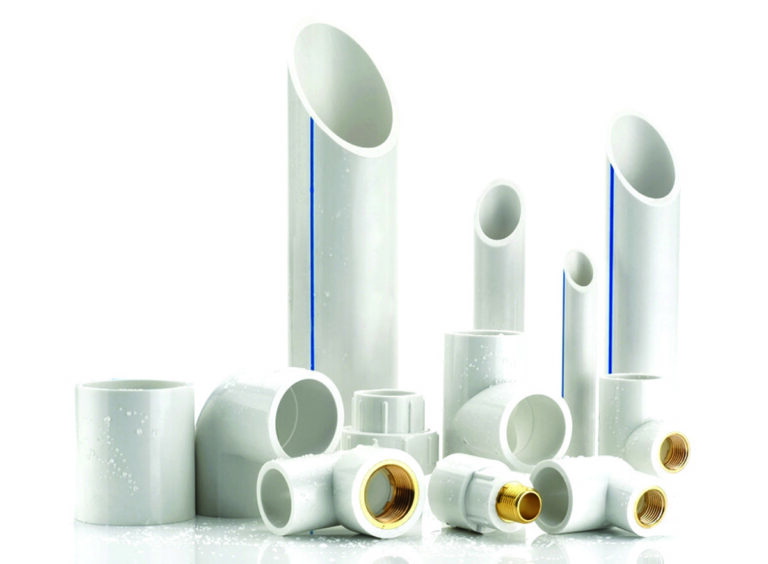PVC HEAT STABILIZERS
- Home
- PVC Heat Stabilizers

PVC Heat Stabilizers
PVC (Polyvinyl Chloride) is one of the most widely used thermoplastics across various industries due to its versatility, cost-effectiveness, and performance. However, when exposed to high temperatures during processing or long-term use, PVC is prone to thermal degradation. This can lead to discoloration, loss of mechanical properties, and the release of corrosive gases.
To address this challenge, PVC heat stabilizers are incorporated into PVC formulations. These are specialized additives designed to maintain the thermal stability of PVC by preventing chain degradation, dehydrochlorination, and discoloration during processing and end-use conditions.
Heat stabilizers play a critical role in ensuring consistent quality, durability, and longevityof PVC products. Commonly used stabilizer systems include metal soaps, organotin compounds, and mixed metal stabilizers, each selected based on the specific application and processing requirements.
Applications range across a variety of sectors including construction (pipes, window profiles), electrical (cables and insulation), and packaging (films and sheets), where thermal performance is essential.
Types of PVC Heat Stabilizers
PVC heat stabilizers are critical additives designed to inhibit thermal degradation during processing and service life. Their selection is dependent on the specific application requirements, processing conditions, regulatory standards, and cost-performance balance. The primary classes of stabilizers used in PVC formulations are outlined below:
Products we offer
1. Lead-Based Stabilizers
Chemical Nature: Inorganic lead salts, such as tribasic lead sulfate (3PbO·PbSO₄·H₂O), dibasic lead stearate, and lead phthalates.
Mechanism: Act by neutralizing hydrochloric acid (HCl) released during PVC degradation, forming thermally stable lead chlorides, and reinforcing thermal resistance.
Performance Profile:
- High thermal stability under rigorous processing conditions
- Superior electrical insulation properties
- Excellent long-term weathering resistance
Applications: Rigid PVC pressure pipes, cable insulation, and building profiles.
Limitations:
- Classified as toxic; environmental and health regulations (e.g., RoHS, REACH) have significantly restricted or eliminated usage in many regions.
2. Calcium-Zinc (Ca-Zn) Stabilizers
Chemical Nature: Organic salts and carboxylates of calcium and zinc, often combined with lubricants and co-stabilizers (e.g., phosphites, polyols).
Mechanism: Zinc acts as a primary HCl scavenger while calcium buffers residual acidity; synergistic effects enhance overall thermal stability.
Performance Profile:
- Good thermal and color stability
- Improved weatherability and UV resistance
- Excellent environmental and toxicological profile
Applications: Medical-grade PVC, food-contact films, children’s toys, and rigid profiles.
Advantages:
- RoHS, REACH, and FDA-compliant
- Recyclable and sustainable alternative to heavy-metal systems
3. Organotin Stabilizers
Chemical Nature: Organotin compounds (e.g., methyltin mercaptides, butyltin carboxylates)
Mechanism: Strong HCl absorption and stabilization via Sn–Cl bond formation; effective at very low concentrations.
Performance Profile:
- Exceptional thermal stability and processing window
- High transparency and color retention
- Low volatility and migration
Applications: Rigid transparent PVC, calendered sheets, bottles, and medical-grade packaging.
Advantages:
- Approved for use in food-contact and pharmaceutical applications (depending on region and formulation)
Limitations:
- Higher cost compared to metal-based stabilizers
- Subject to regulatory scrutiny in some markets
4. Mixed Metal Stabilizers
Chemical Nature: Combinations of alkaline earth and transition metal carboxylates (e.g., Ca/Zn, Ba/Zn, Mg/Zn) along with organic co-stabilizers and antioxidants.
Mechanism: Multi-metal systems offer synergistic stabilization by covering a broader degradation spectrum and balancing initial color with long-term heat resistance.
Performance Profile:
- Tunable stabilization profiles for specific processing needs
- Balanced lubrication and compatibility
- Enhanced compatibility with fillers and pigments
Applications: Used in both rigid and flexible PVC applications, including window profiles, pipes, cables, and flooring.
Advantages:
- Versatile across multiple processing techniques (extrusion, injection molding, calendaring)
- Compliant with global environmental standards
5. Lead-Based One-Pack Stabilizers
Lead-Based One-Pack Stabilizers are pre-formulated additive systems that incorporate lead-based heat stabilizers along with lubricants, co-stabilizers, and optionally fillers or pigments, all blended into a single homogeneous powder or granular form. These systems are specifically designed for rigid PVC processing, offering excellent thermal stability, durability, and cost-effectiveness.
Technical Composition:
A typical lead-based one-pack stabilizer includes:
- Primary Stabilizers: Lead compounds (e.g., tribasic lead sulfate, dibasic lead stearate, lead phosphite)
- Lubricants: Internal and external (e.g., stearates, waxes)
- Co-stabilizers: To support long-term thermal performance
- Optional Additives: Fillers, pigments, and processing aids, based on application requirements
Key Features:
- Superior Heat Stability: High resistance to thermal degradation during high-temperature processing (extrusion, calendaring)
- Electrical Insulation: Excellent dielectric properties, ideal for wire and cable applications
- Weatherability: Strong resistance to UV and moisture, making it suitable for outdoor use
- Process Optimization: Simplifies dosing and ensures consistent formulation with reduced weighing and blending time
Applications:
- PVC pressure and non-pressure pipes
- Electrical conduits and cable sheathing
- Window and door profiles
- Industrial sheets and fittings
Headquartered in New Delhi, our operations span across the country and are powered by a robust backend infrastructure, including multiple Regional Offices that ensure timely and efficient service across the country.
GET IN TOUCH
ADDRESS:
1009, PEARLS BEST HEIGHTS-2, NETAJI SUBHASH PLACE, New Delhi-110034
CALL US:
9910852222





